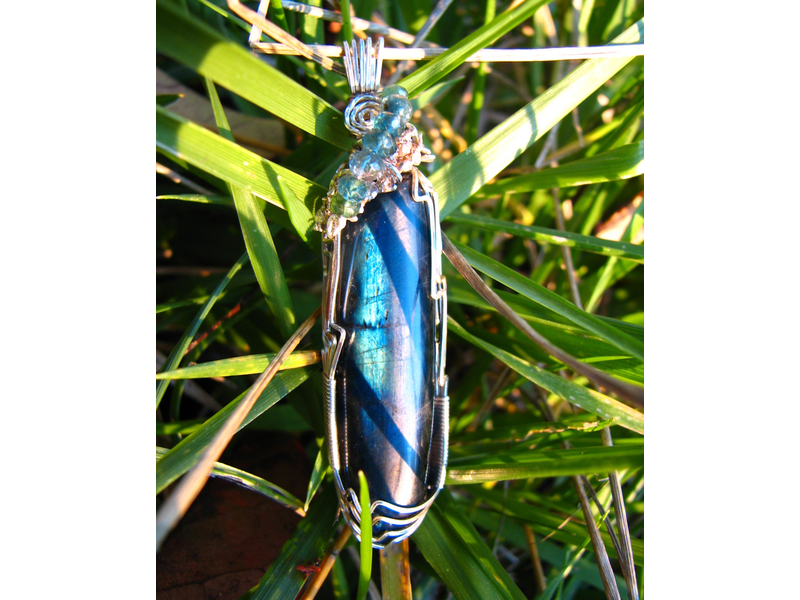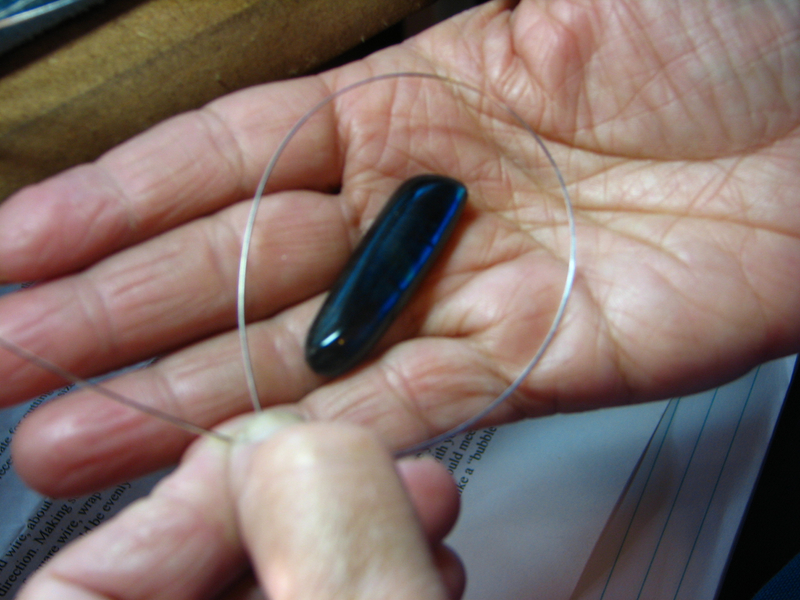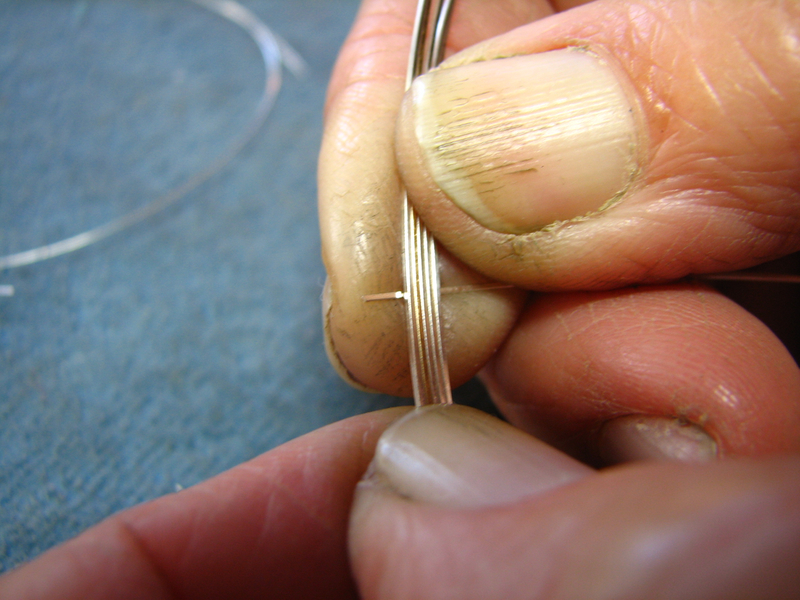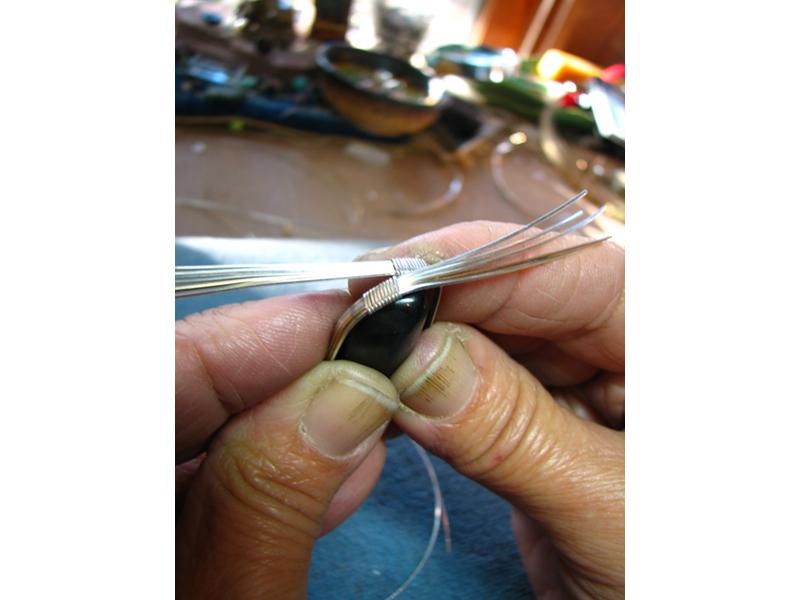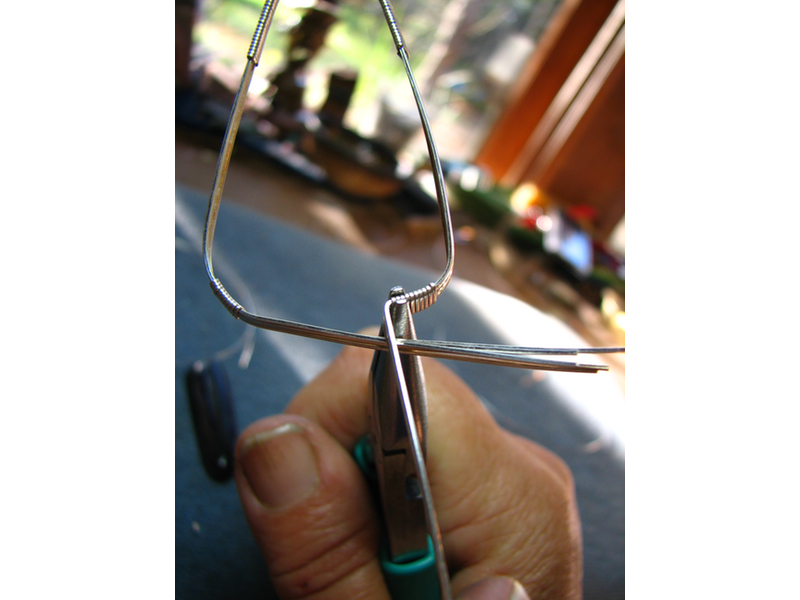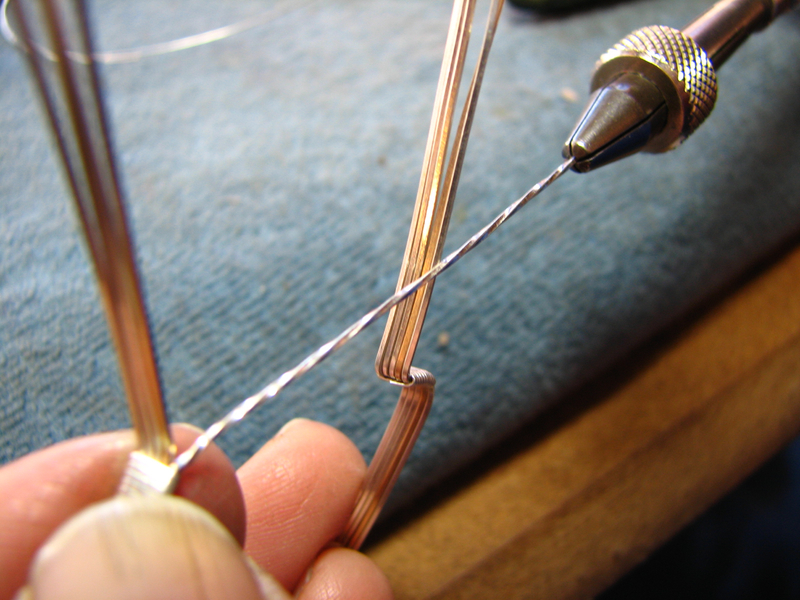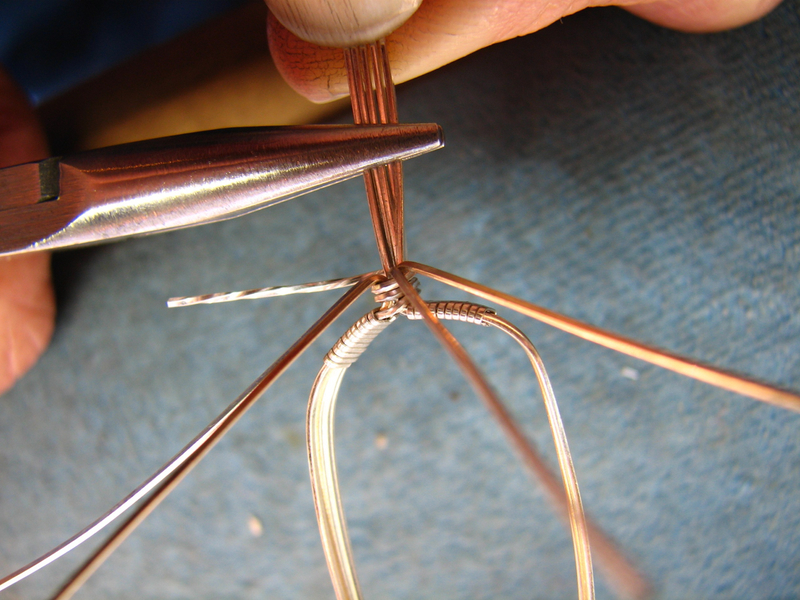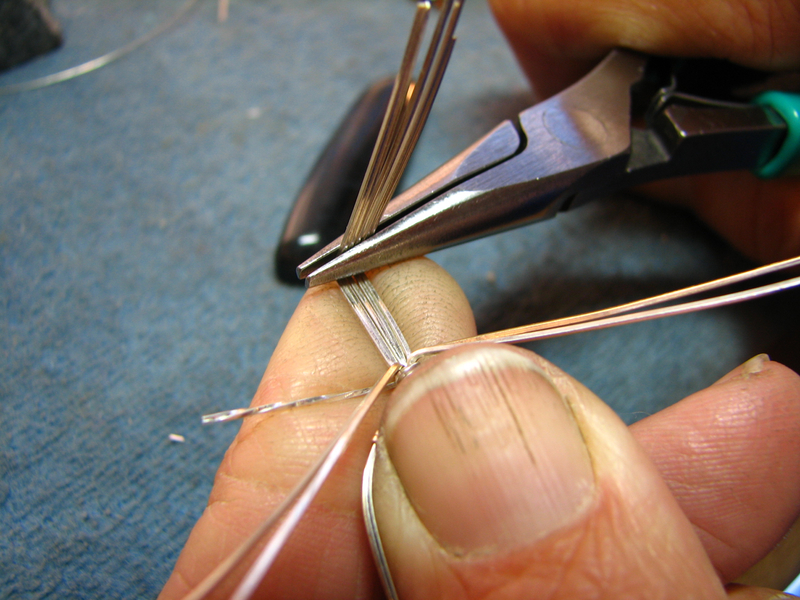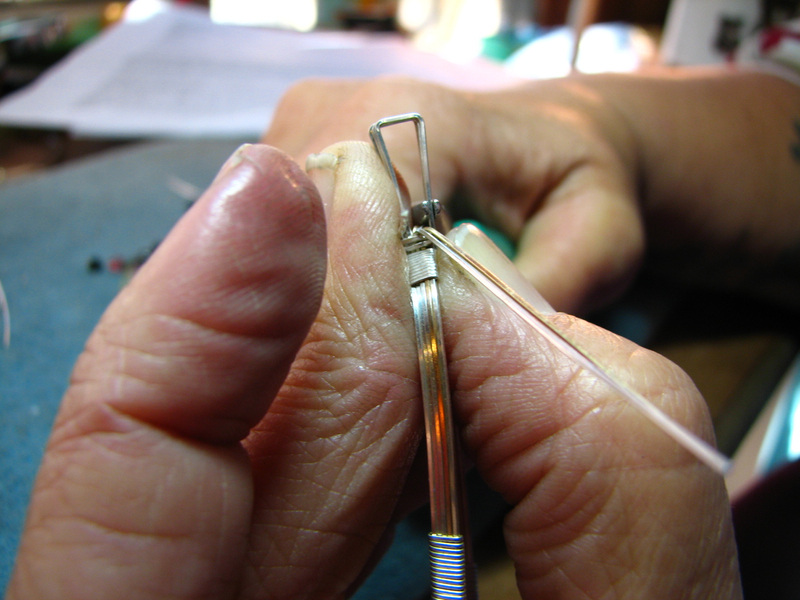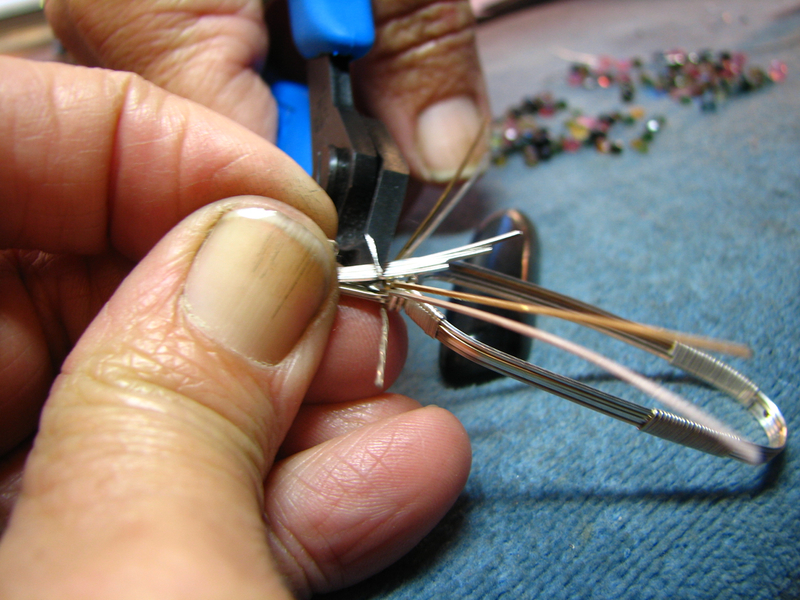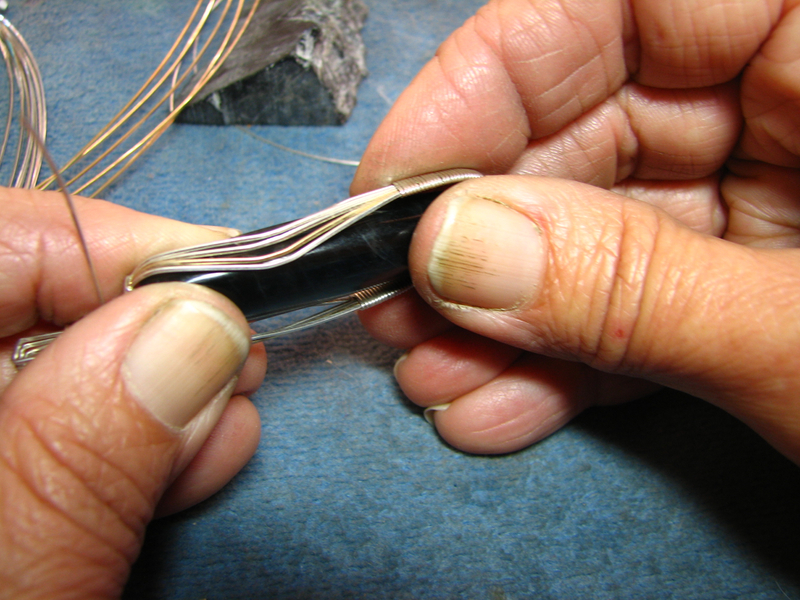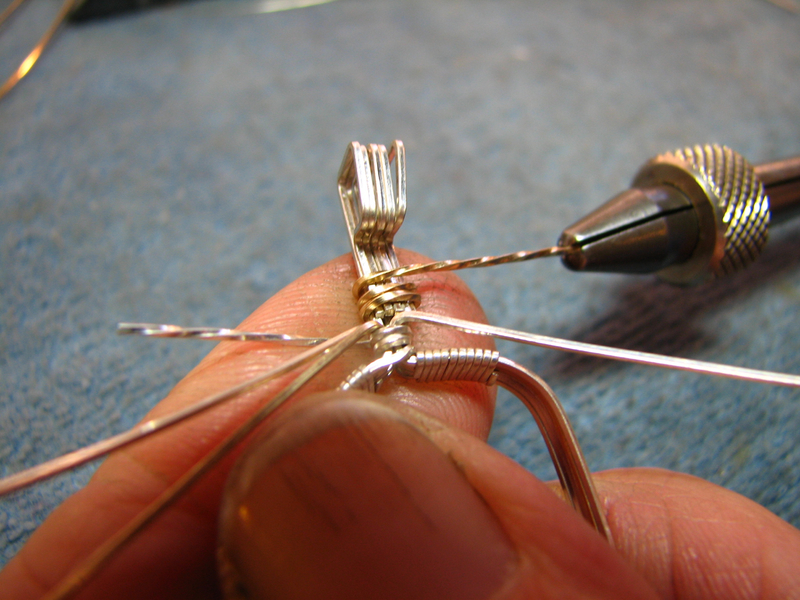Wire wrapping is an imaginative, spontaneous, and versatile method of setting free-form stones using wire and simple hand tools. It allows the shape of the stone to control the placement of wire. The piece becomes its own tool, the moveable wraps acting as clamps and measuring points. By varying the number of wraps and wires, you can accommodate almost any stone.
Craft a centerpiece for a beading project, create a pendant out of that odd-shaped stone, or turn a beach rock into a magic amulet. Amaze your friends!


